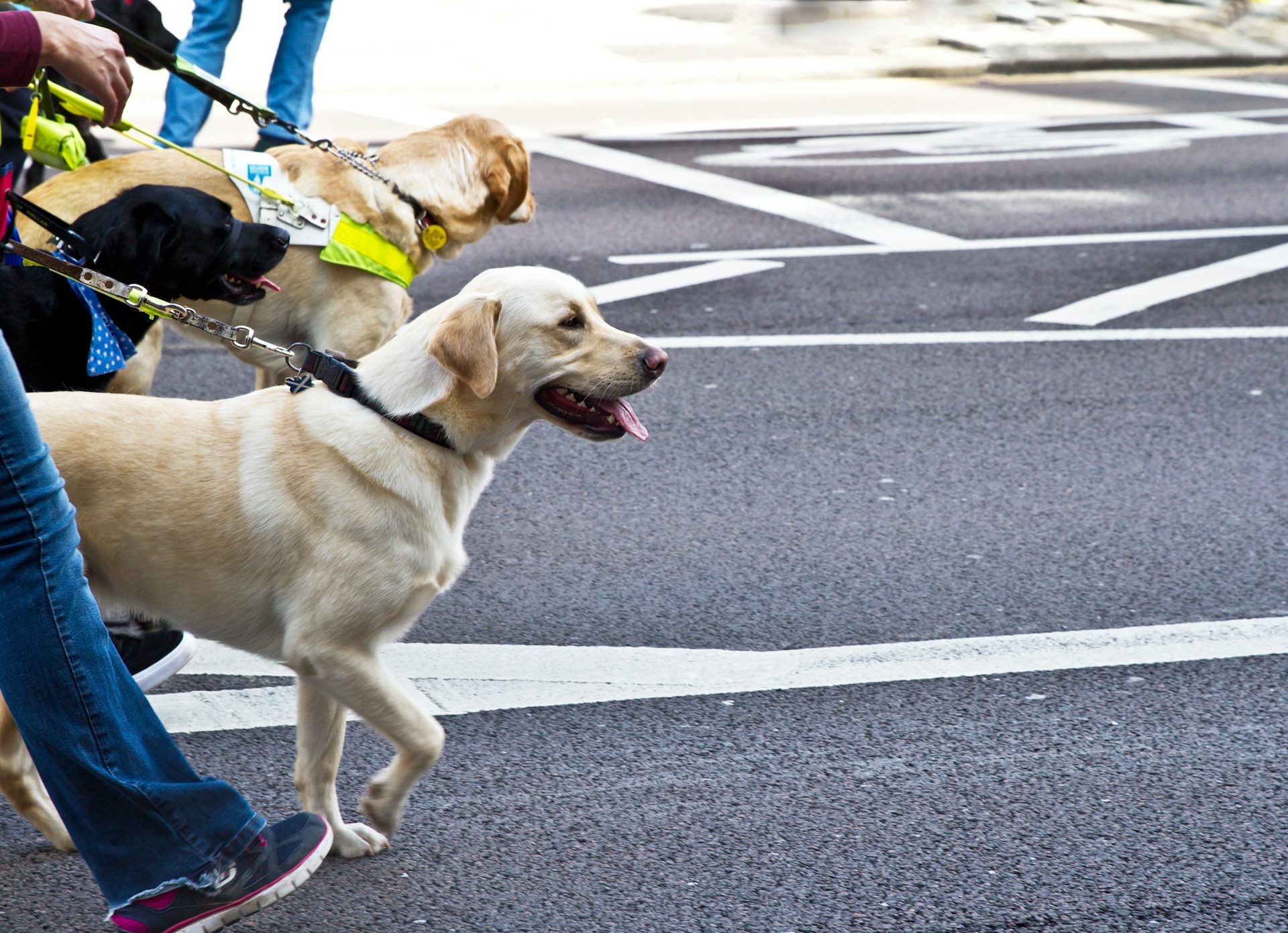Guide dogs are incredible companions that assist people who are blind or visually impaired. One of the most frequently asked questions about these amazing animals is, “How do guide dogs know where to go?” The answer, while seemingly complex, is rooted in dedicated training and a strong partnership between the dog and its handler.
The simple explanation is that guide dogs learn through practice. Just as you learn a familiar route, like walking from your home to a friend’s house, guide dogs memorize routes they frequently travel. They are trained to navigate common destinations, such as the grocery store, bus stops, or other important places for their handler. These routes are ingrained through consistent repetition and positive reinforcement.
So, guide dogs primarily navigate familiar routes they’ve practiced. However, it’s crucial to understand that the person being guided also plays a vital role in the navigation process.
Mastering Obstacle Identification
Before a guide dog learns specific routes, they undergo extensive training to develop essential skills. One of the most critical aspects of this training is learning how to identify and respond to obstacles. This is crucial for ensuring the safety of the person they are guiding.
Imagine walking down the street when you encounter a fallen tree branch blocking your path. You might simply step over it if it’s small or walk around it if it’s larger. A blind person cannot see these obstacles, so the guide dog must alert them to the hazard.
The dog’s response depends on the size and nature of the obstacle. For smaller obstacles, the dog might carefully guide the person around it. However, for larger obstacles that pose a significant risk, the dog will block the person’s path, preventing them from moving forward until the obstacle is addressed.
These obstacles can include seemingly insignificant things like a curb, a step, or even low-hanging branches. A guide dog is trained to recognize and react to these potential hazards, ensuring the person’s safety and preventing accidents.
The Importance of Teamwork and Communication
Many people believe that guide dogs determine when it is safe to cross a street. However, this is a common misconception. While the dog will stop at the curb to indicate the end of the sidewalk, it is the person who ultimately decides when it is safe to cross.
The person must listen to the surrounding traffic sounds and assess the situation before giving the command to cross. The dog is trained to obey this command and will guide the person safely across the street, provided it remains safe to do so.
This highlights the crucial element of teamwork and communication between the guide dog and its handler. The dog provides information and guidance, but the person must use their other senses and judgment to make informed decisions. This collaborative partnership is what makes guide dogs such effective and reliable companions.
In conclusion, guide dogs know where to go through a combination of route memorization, obstacle identification, and a strong partnership with their handler. They undergo extensive training to develop these skills, ensuring they can safely and effectively guide people who are blind or visually impaired. The human element is critical; the user’s awareness and decision-making are essential for safe navigation.
